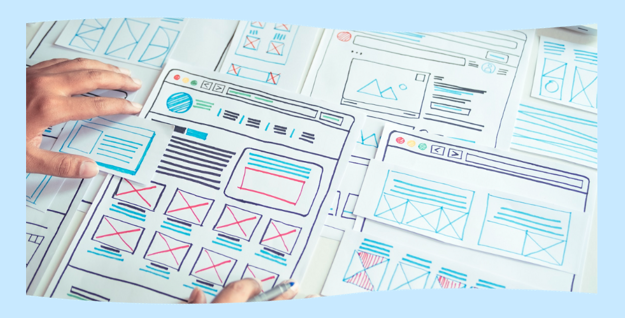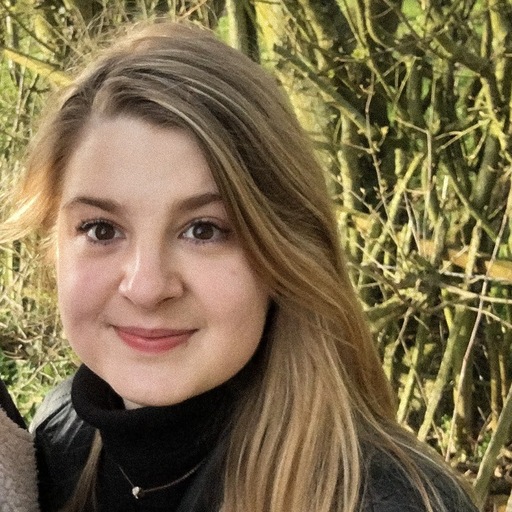This November marks my two year anniversary as an Interaction & Product Designer at TPXimpact.
I joined the company as a Junior Interaction & Product Designer, a few weeks fresh from finishing my MA studies. I'd spent most of my 2020 and 2021 up until that point as a student again. Stepping back into the world of work was one, nerve-wracking thing.
To do it as part of a career change and move into something that seemed completely alien from my previous life in publishing? That moved it right into the scale of "What am I doing? Why did I do this to myself?"
A little under a month from when I started, I found out about my first project. It wasn't something I'd given much thought of until then – the client. And now that they had a name, it all felt very real.
I stayed on that first project for just over a year and half, and those initial months feel like a lifetime ago now. But looking back, it’s where I started to move from “what am I doing?” to “okay, I think I’m getting this”.
Here are some of the things I learned in those early days as a Junior Designer, which have helped me develop my discipline and that I still take with me into projects today.
Not knowing is okay
I spoke to a lot of colleagues about the general confusion I felt as my first project kicked off. I was trying to remember who was who and understand what they did – never mind what we were supposed to be doing and achieving as a team. I was encouraged by how many of them had felt similarly on new projects, even if they had been at the company for a while.
Now that I've seen a few more project starts, it's not that the confused feeling has gone away. Instead, I've become more comfortable with it being around. I've been on work where we were defining scope until the very last moment, to respond to changing constraints. While confusing at times, we’ve always pulled through on our work and deliverables – partly because we kept questioning our work and the value we’re delivering. And on a related note...
Go on, ask that question
This is probably in every article written about tips for being a designer – and for good reason. Ask that question, get it out of your head. It was difficult at first for me to let go of the idea that I should already know something, and thus, not ask. People can't expect you to know everything, maybe even more so as a Junior Designer. If anything, with more experience, I ask more questions now – because I feel less afraid to.
Glueing yourself to the researchers is a great thing to do
When I started that first project, the big question was ”where do we start?” In absence of any outright tasks, I attached myself to the Design Researchers on the project. If they were having a planning session, I asked for an invite. I signed up to every note-taking slot I could for the research sessions. If someone had already taken it, I tried to get in anyway as an observer.
I won't pretend I did this as part of some great master plan. I was trying to make myself useful in an environment where I wasn't sure what a Junior Designer was supposed to do. But, when we later started designing solutions to our users' problems, having that first hand knowledge of the user research felt a bit like having a cheat sheet.
Nowadays, when I start a new project I try to keep to that same behaviour of shadowing our researchers. This helps me feel like I know the insights and surrounding context better than compared to reading or listening to it second-hand. Emma and Dani have previously written about ways to get your team ‘inside the research bubble’ so that the whole team engages with user research.
Get the first try over with
My first project gave me my first go at running a workshop session. Looking back, it was only a creative warm-up, but the idea alone stressed me out beforehand. Surprise! It went fine, and once it was over, I was asking myself what all the fuss was about.
Same went for presenting at my first show and tell. I had a very supportive team around me, but naturally, I still felt nervous. I’ve usually been confident presenting, but the style was something I needed to get used to. On the one hand, I don't ever want to watch the recording of that first go... but I do know it's a case of experience being a very good teacher, and it's now something I'm pretty comfortable with.
Friendly feedback
Something that I loved (but also terrified me) was our design team's approach to giving feedback. The ideal end result is that you get to hear some nice things about what you do well, as well as some useful things that you could improve on. The concept still made me nervous.
What helped me was finding friendly faces I could trust. Ideally, they'd give me feedback in the moment, rather than waiting for typical feedback periods like review cycles. I started asking teammates ahead of time to observe me doing something, usually a new task. It helped give me reassurance that if I wasn't completely comfortable with the task they could step in to help, and that I could start a conversation about how I did, rather than wait for that feedback to come along by chance.
The current state of things
A year after I joined TPXimpact, I got promoted to a Midweight Interaction & Product Designer. This process gave me an opportunity to reflect on how far I’d come from when I’d started. I was probably still asking myself “what am I doing?”, but after a year it was coming from a place of curiosity, rather than panic!
My current project work wraps up before the end of this year, and I’m excited to see what the next one might bring. One certainty is that I’ll still be coming in with all my questions.
Our recent design blog posts
Transformation is for everyone. We love sharing our thoughts, approaches, learning and research all gained from the work we do.

Lessons learned from joining projects in progress
We share tips for joining a project where there’s already an established design team in place.
Read more
Find out all about what our Design team has been up to over the past few months.
Read more
Em reflects on how we support large organisations to build confidence and embed approaches to support research activities.
Read more

